|
“The main goal of our school is not just fighting opponents, Our training also includes meditation to overcome inner weakness. Warriors for life.”
I would like to introduce you to a Spaniard who has a passion for martial arts especially Muay Thai and Thai weapons. His name is Pedro Solana. Currently, he is living and operating a training camp in Mae Taeng District, Chiang Mai Thailand to teach Muay Thai and Thai weapons to students who come from over the world.
Pedro Solana was born in Spain. He entered the martial arts world training in judo when he was only six years old. In the 80's he was introduced to Muay Thai by Ajarn Eugenio Fraile, where his fighting career began. In the early 90's he moved to the USA to further his Muay Thai skills under Ajarn Surachai Sirisute and continued fighting professionally for a number of years. During those years he trained other disciplines including Wing Chun under Sifu Francis Fong, Kali under Guro Dan Inosanto, and various other masters of grappling (Machado brothers, Royce Gracie, Ricardo Murgel and Jacare Calvalcante).
In 1998, after becoming the United States Muay Thai Middle Weight Professional Champion, he decided to travel to Thailand for a full year to expand his Muay Thai and Krabi Krabong skills. In 2000 he opened the Thailand Arts Institute in Atlanta, GA. to support his fighting career. In 2002 he permanently moved to Thailand to continue learning. After becoming a monk he went to train in Muay Thai Chaiya under Kru Lek and came back to Krabi Krabong (Thai Weapons) training under Ajarn Sila Mesaman from the Wat Buddhai Sawan School. In 2003, Pedro Solana opened his first school in Thailand. In 2010 he expanded into various other forms of South East Asian martial arts including Silat Minangkabau Ground Fighting, Bokator and Kalaripayattu. From his exposure to different martial arts he created a unique and effective system of self defense known as "Muay Thai Sangha Fighting Arts".
Later on, through experience, deep reflection, and self discovery, Solana realized in meditation that certain aspects in the 'Fighting Arts' were missing. In 2013 he decide to blend these internal concepts together and develop a new form of self defense called "Kshatria Sangham Internal Arts" which included all the concepts from his past experiences of fighting.
His work now is involved in teaching seminars around the world, and creating documentaries to expose an important message for humanity related to overcoming inner fears and developing and understanding the "Self" through the path of martial arts.
Here is an interview
JY: You are a professional in Thai Martial Arts and came to study and had competitions in many places around the world and you also opened Muay Thai Sangha Camp in Chiang Mai. Please tell us what is the inspiration for you about Martial Arts and the reasons for opening this camp?
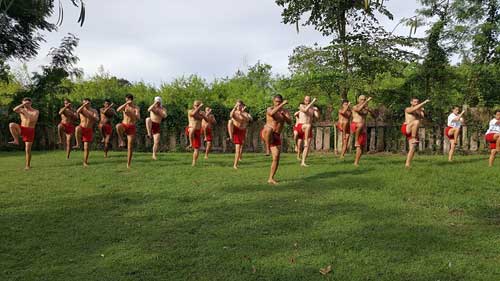 |
PS: There have been many reasons for pursuing the martial arts but at the core of it all my inspiration would be my passion for becoming a better human being. I have found that martial arts provide a vehicle to develop yourself physically and mentally as well as spiritually, when it is adopted as a lifestyle in the right way rather than an exercise. Like any art that one may choose to pursue, you inevitably begin to share your self expression with others and ultimately your vision. This is especially true with the martial arts as it allows for a more intimate platform to share your skills and understanding with other human beings on a personal level. Through my own development, I have learned to better understand myself, and in turn, the world I live in. My inspiration to become a better person has made me see my role in helping make a better world which is precisely why I opened
this camp. I have faith that through becoming better and helping others along the way, we can begin to shape a better life. It is only when we know ourselves that we can start to make a change.
JY: What kinds of martial arts have you practiced and who are your martial arts teachers in the US. Thailand and Spain?
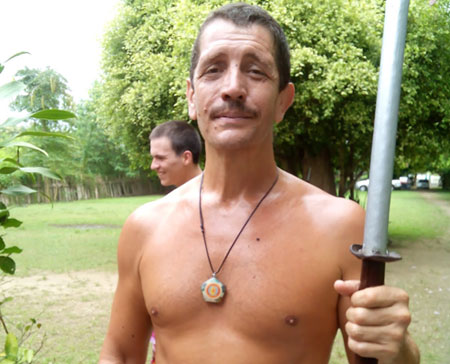 |
PS: I began practicing martial arts at the age of six when I first stepped into a training dojo for Judo in Spain. It wasn’t until I was 17 when I began training in Kickboxing under the guidance of Ajarn Eugenio Fraile where I became a 1st degree black belt. From there I transitioned into Muay Thai in the United States with Ajarn Surachai Sirisute's association for about six years and achieved the level of instructor within the Muay Thai Association of USA. Throughout that time, I explored a number of different martial arts including Kali and the grappling arts, such as Jiujutsu having learned from various teachers. While in the States I also became a black belt and instructor in Wing Chun with Sifu Francis Fongunder the Wing Chun Associationof USA. Once I came to Thailand and Southeast Asia, there were a multitude of schools and teachers that I had the blessing of
experiencing their knowledge. These martial arts includes Minangkabau Ground Fighting, Bokator, Kalaripayattu and Silat in which I gained a level of instructor under Syofyan Nadir Smi. What really stuck with me from Thailand were the teachings shared by Kru Lek which was centered around Muay Chaiya, where I dedicated my time to becoming an authorized instructor. In addition to Muay Chaiya, I attained an 8th degree gold sash Ajarn in Krabi-krabong at the Buddhai Swan Institute of Swordsmanship with Kru Sila Mesamarm and became an instructor at Sri Ayuttaya Chiang Mai having the pleasure of learning from Kru Kong. These two martial arts resonated with me due to their simplicity and elegance expressed through the movements and a connection I felt for the history of both the arts and my past experiences. Among all these martial arts, I chose not only to train in but also experience competitive fighting in order to test my abilities and solidify my knowledge.
There have been many teachers that I have gained from and each one I can say that I am entirely grateful for the opportunities I have had with them.
JY: In your opinion, what are the benefits of learning and practicing martial arts?
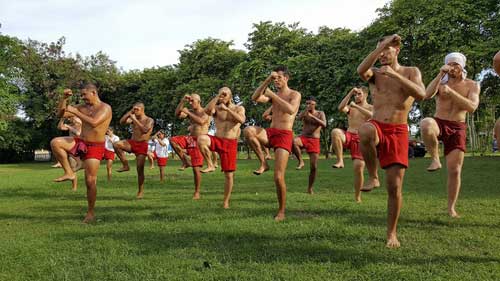 |
PS: There are many aspects of self-development that can be found within the practice of martial arts that lay with one of two interconnected categories, being the body and the mind. Each of these hold their own benefits which have no limits outside of what you give yourself. Within the physical side of martial arts, the highest gain would be health as we begin to see the role of breathing consciously and its relationship with the movement of the body in an efficient manner. Efficiency also becomes apparent as we feel the movements that each martial art has to offer, developing coordination in our body as everything moves in unison. Like anything that is physically demanding in the way martial arts are, there is the advantage of building muscular and tendon strength, broadening our flexibility while also gaining a high level of endurance. There is an equal part mental growth as
there is physical since these practices require much perseverance to overcome the challenges of the mind and body. One of the most beneficial attributes of mental development would have to be confidence. Through the training, you have the experience of confronting a lot of fears and hidden or otherwise negative feelings within us. Working with these energies allows the individual the opportunity to transform them into a more positive force, humbling ourselves which also establishes a self-respect that is transferred to others and to our environment.
JY: For many years, Muay Thai Sangha Camp has been recognized by many people. Please tell us about martial arts courses you provided at Muay Thai Sangha Camp.
PS: Muay Thai Sangha takes a unique approach to the fighting arts of Thailand which can be experienced through single day visits or an extended period of time. We hold weekly courses at the school as well as monthly intensive courses. Typically a day is divided into a morning class of two hours weapon training and two hours in the evening with open hand combat for five days a week with a half day on Saturday. The monthly intensive courses have extended training periods up to threes hours each session. During the morning, the Muay Thai Sangha fighting arts revolve around double sword, staff fighting and knife which implement both offensive and defensive maneuvers. There is a demand for efficient footwork when dealing with weapons as it is less forgiving in real life situations and becomes a matter of life and death.
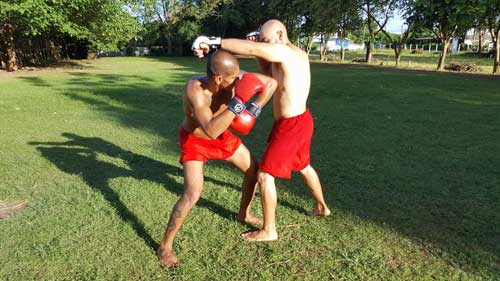 |
Coordination, like all martial arts is a strong focus since we must be able to connect the movements of our entire body while maintaining a calm state of mind under the pressure of working with weapons. Not only is the importance of correct structure taught in attacking and defending but also the ability to execute both offensive and defensive techniques simultaneously. Students will gain a better understanding of countering attacks as well as defending against a counter. The weapon training in the morning shares a lot with the evening's open handed counterpart in regards to application although it is rooted in Sport Muay Thai as well as Muay Thai Chaiya. As mentioned, structure builds the foundation of these arts which is intentionally focused on throughout the duration of the courses. Just as with the weapon training, the courses ensure that proper footwork is taught to allow the student to maneuver themselves
effectively in order to evade, defend, counter and attack. Of course, not only is movement of the body learned by the students but also how to deliver attacks efficiently with the arms using fists and elbows as well as the legs, including feet, shins and knees. The classes implement basic warmup exercises resolving around body structure which then transitions into segments of striking variations leading into combination work, either shadow boxing or pad work.
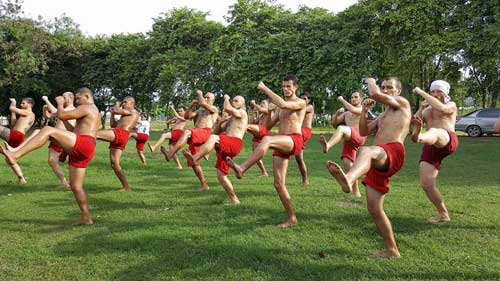 |
Each session typically closes with defensive techniques and the application of counters. Muay Thai Sangha teaches people how to fight but it also aims to develop teachers. The philosophy behind the school fortifies it's teachings with a deeper understanding of Muay Thai and weapons than to just simply execute a technique. It is necessary that each student not only leaves with the knowledge of the fighting arts but also the ability to see how and why it all works. For those unable to make the journey to Thailand or wish to continue their training back home, there are online courses available through the school website (muaythaisangha.com) as well as yearly seminars that take place around the world.
JY: Since you are also a guest speaker and representative, there are many foreign people who would like to learn and know more about Thai martial arts such as Thai weapons or Muay Boran. Please tell us about your experiences of teaching people in all ages, genders and nationalities.
PS: First it is important to understand that individually we are all different and because of this there is a demand for a level of awareness and adaptability toward each student that comes to learn. Generally speaking though, each nationality has a certain way of learning since there is a shared cultural perspective that each country holds, however loose it may be. I have also found that different ages require different motivation but the Thai Martial Arts are beneficial in the sense that they are simple, effective and knowledge is shared without secrets. This is productive in allowing students to feel an improvement in a shorter period of time and in turn encourages growth regardless of age, gender or nationality. Over the past 16 years of teaching, I have learned that everyone carries with them their own unique challenges to overcome and it is necessary to work with each
student in a different manner. A good teacher not only has to transmit the information of the teachings in a way that everyone can understand but also try to feel what mental, emotional or physical barriers each student has and guide them to becoming a more whole and balanced human being. This is a great challenge for a teacher that requires constant learning as there may be some individuals who are not open or receptive,and out of anger, choose to leave. It is especially necessary to be patient and accept that you cannot help everyone. I can say that it makes me happy to see a positive change and knowing my energy was invested constructively. The beauty of having such a diverse group of students comes from overcoming the obstacle of differentiating in order to unite for a common goal which is exactly the purpose of community. There are times where there might be a language barrier or difference in skill level, but it is
the intent of Muay Thai Sangha to be patient with each other, and humbly help those around us. There have been many incredible friendships built through this school and because of a shared growth, often times, there is a feeling of closeness as those who come to this school have gained a family. In the moments when these feelings are expressed, it is when I experience great joy and gratitude for the lessons I have gained and shared through my life.
JY: Muay Thai is a very popular sport and Martial Art that many people around the world choose to practice. However, some people think it is violent and dangerous in competition and they don’t want the boxers to be heavily injured. What do you think about this?
PS: Muay Thai is a very damaging martial art in general but even more so in competition, especially when it is not trained effectively. There are some schools that focus on specific techniques which limit the fighters ability to adapt against opponents with a diverse skill set. When there is limitation in the training, it inevitably reflects in the ring and can end in irreparable damage to a fighter who does not have the correct knowledge to defend or escape from a devastating attack. Saying that, there are also beneficial attributes that can be developed through competition.
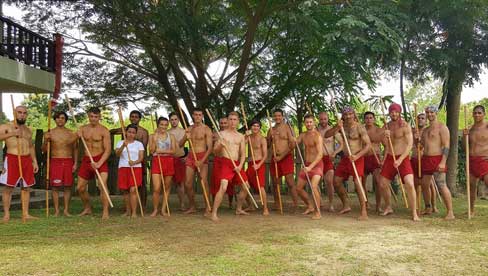 |
During fights, the body and mind are put under a certain pressure that cannot be achieved through technical training or even sparring. This pressure has the potential to sharpen our abilities and really transform the training into something greater than what it was, much like how carbon can be turned diamond. It is often the challenges in life that can gift us with the greatest rewards where we learn to gain control of our mind and body, but we must be careful to not allow our ego to develop with each challenge we overcome.
JY: Is there anything else you want to tell us about Thai Martial Arts?
PS: As a foreigner, I must extend my gratitude to this beautiful country and the teachers for the lessons that I have had the blessing of experiencing. The culture is incredibly valuable in understanding where the Thai Martial Arts have come from and the level of self-expression that is capable through these arts. One of my teachers once said to me that when you reach a certain level of skill, fighting becomes a dance. I believe this to be true as you realize that your interactions with your mind, your body and the energies outside of yourself turns into a dance, becoming something greater than yourself and you begin to feel a spiritual connection with the world we share. This is why the history and respect for the culture is a must if you wish to develop yourself beyond techniques and exercises. My experiences with the Thai Martial Arts filled me with much love
and gratitude and I choose to repay these lessons by sharing them around the world.
|